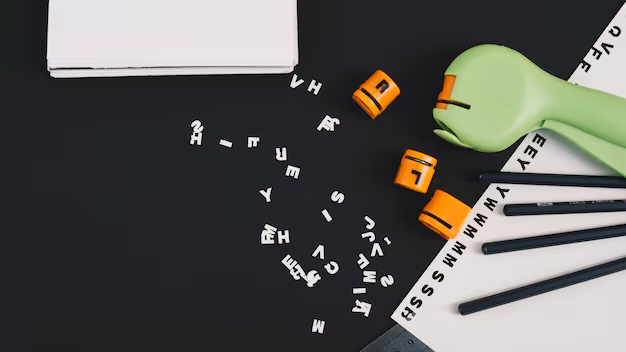Some Mad Libs Words: Fun, Creativity, and Wordplay in the NYT

Mad Libs is a beloved word game that has sparked creativity and laughter for decades. Whether you’re playing it with friends or using it as a fun educational tool, Mad Libs encourages creativity by filling in blanks with various types of words like nouns, verbs, adjectives, and more. Its roots stretch far back in American culture, making it an iconic part of many childhoods. The New York Times (NYT) occasionally incorporates playful references to Mad Libs in its entertainment sections or games, further fueling the excitement and fun around this classic wordplay game. In this article, we’ll dive into the different types of Mad Libs words, explore how they contribute to making the game so enjoyable, and discuss some examples of Mad Libs words that have made their way into mainstream culture, particularly in the NYT.You know about openrendz.
What Are Mad Libs Words?
Mad Libs is a game where participants fill in the blanks of a story with specific types of words—often creating ridiculous, funny, or surprising results. These words are categorized into parts of speech, and each part of speech plays a unique role in shaping the outcome of the story. The classic categories include:
-
Nouns: These are names of people, places, things, or ideas. Nouns are essential because they anchor the story to something real or tangible. Examples include “dog,” “house,” or “city.”
-
Verbs: Verbs describe actions or states of being. These words can turn a dull story into an action-packed or silly tale. Examples include “run,” “jump,” or “sing.”
-
Adjectives: Adjectives modify nouns, giving more detail about them. They often add humor, exaggeration, or color to a story. Examples include “fuzzy,” “gigantic,” or “slimy.”
-
Adverbs: These words modify verbs, adjectives, or other adverbs. They usually answer questions like “how?” “when?” or “where?” Examples include “quickly,” “horribly,” or “carefully.”
-
Interjections: Interjections are short, often abrupt words or phrases that express emotion. These are what you’d say when you’re surprised, excited, or upset. Examples include “wow,” “oops,” or “oh no.”
By filling in these blanks with unexpected words, participants create hilarious and sometimes nonsensical stories that are guaranteed to make people laugh.
How Mad Libs Words Enhance Creativity
The power of Mad Libs lies in its ability to ignite creativity. Since the words you fill in are not usually related to the context of the story, the resulting narrative is often absurd, which is the main source of its humor. This encourages participants to think outside the box, choosing words that might be ridiculous or outlandish, ultimately leading to a fun experience.
For example, imagine a Mad Lib story where you’re asked to fill in the blanks with a noun, verb, and adjective:
- “The (adjective) (noun) (verb) across the field.”
If you fill in “purple” (adjective), “elephant” (noun), and “sang” (verb), the resulting sentence could read: “The purple elephant sang across the field.” The silliness of the scenario is what makes Mad Libs so enjoyable.
Mad Libs words can also be used as an educational tool to help students learn parts of speech, improve their vocabulary, and develop their creative writing skills. Teachers often use the game as a fun classroom activity that engages students while reinforcing important language concepts.
Mad Libs in the New York Times (NYT)
While Mad Libs may seem like a simple game for children, its appeal extends beyond that. The New York Times, known for its serious reporting, also has a lighter side, sometimes incorporating playful references to Mad Libs. These references often appear in their puzzle section or in articles that discuss language, creativity, and humor. The NYT occasionally hosts games or activities that involve wordplay, and Mad Libs-inspired segments are no exception.
In these NYT-inspired Mad Libs games, readers are often asked to fill in blanks with various types of words, creating funny or unexpected results that bring a sense of humor to the day’s reading. It’s a great way to add fun to a daily routine, especially for those who enjoy word games and puzzles.
Examples of Mad Libs Words
Here are a few examples of Mad Libs words that might pop up in a NYT-inspired game:
- Nouns: Pirate, mountain, unicorn, pizza, computer, pencil
- Verbs: Skip, jump, laugh, dance, run, swim
- Adjectives: Sticky, enormous, furry, hilarious, sneaky, loud
- Adverbs: Silently, quickly, awkwardly, fiercely, wildly
- Interjections: Wow, yikes, ugh, oh no, hurray, phew
By using these words in a Mad Libs format, you can transform a mundane sentence into something hilarious or unexpected, making the activity enjoyable for all ages.
Why Mad Libs Words are Timeless
What makes Mad Libs so timeless is its simplicity and adaptability. The structure of the game remains largely unchanged, yet the possibilities for creativity are endless. Whether you’re playing with friends, using it as a teaching tool, or reading a Mad Libs-inspired article in the NYT, the game’s ability to make people laugh never fades.
In a world where people are constantly on the go, playing a game that requires minimal effort yet delivers maximum enjoyment is refreshing. Mad Libs brings people together by offering an easy, fun, and engaging way to pass the time. It encourages humor, language skills, and creativity, all while delivering a hearty laugh.
Conclusion
Mad Libs is a classic game that has stood the test of time due to its ability to bring laughter, creativity, and fun to people of all ages. The words used in Mad Libs—whether nouns, verbs, adjectives, or more—help create ridiculous and delightful stories that are sure to entertain. The incorporation of Mad Libs in outlets like the New York Times further reinforces its universal appeal, reminding us all of the joy of playing with language. Whether you’re a longtime fan or a newcomer, Mad Libs offers a lighthearted way to enjoy words and creativity.



